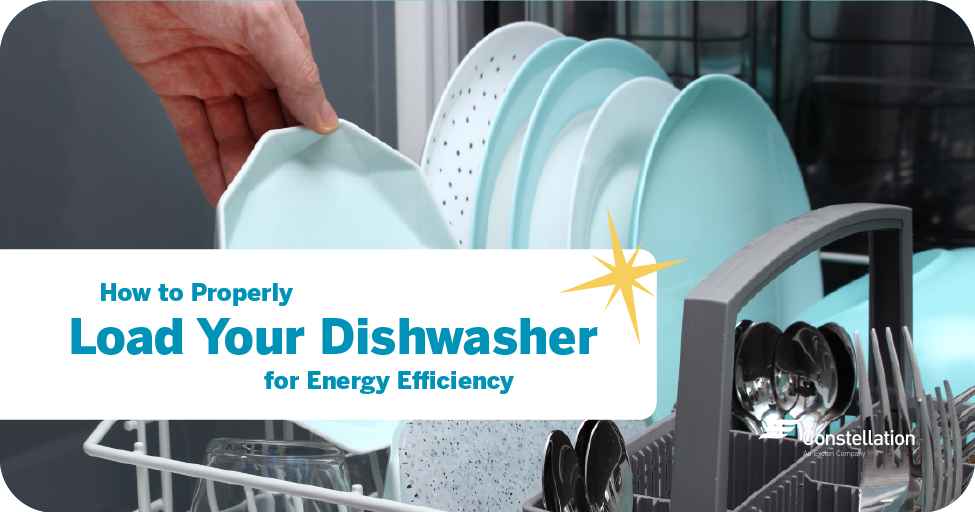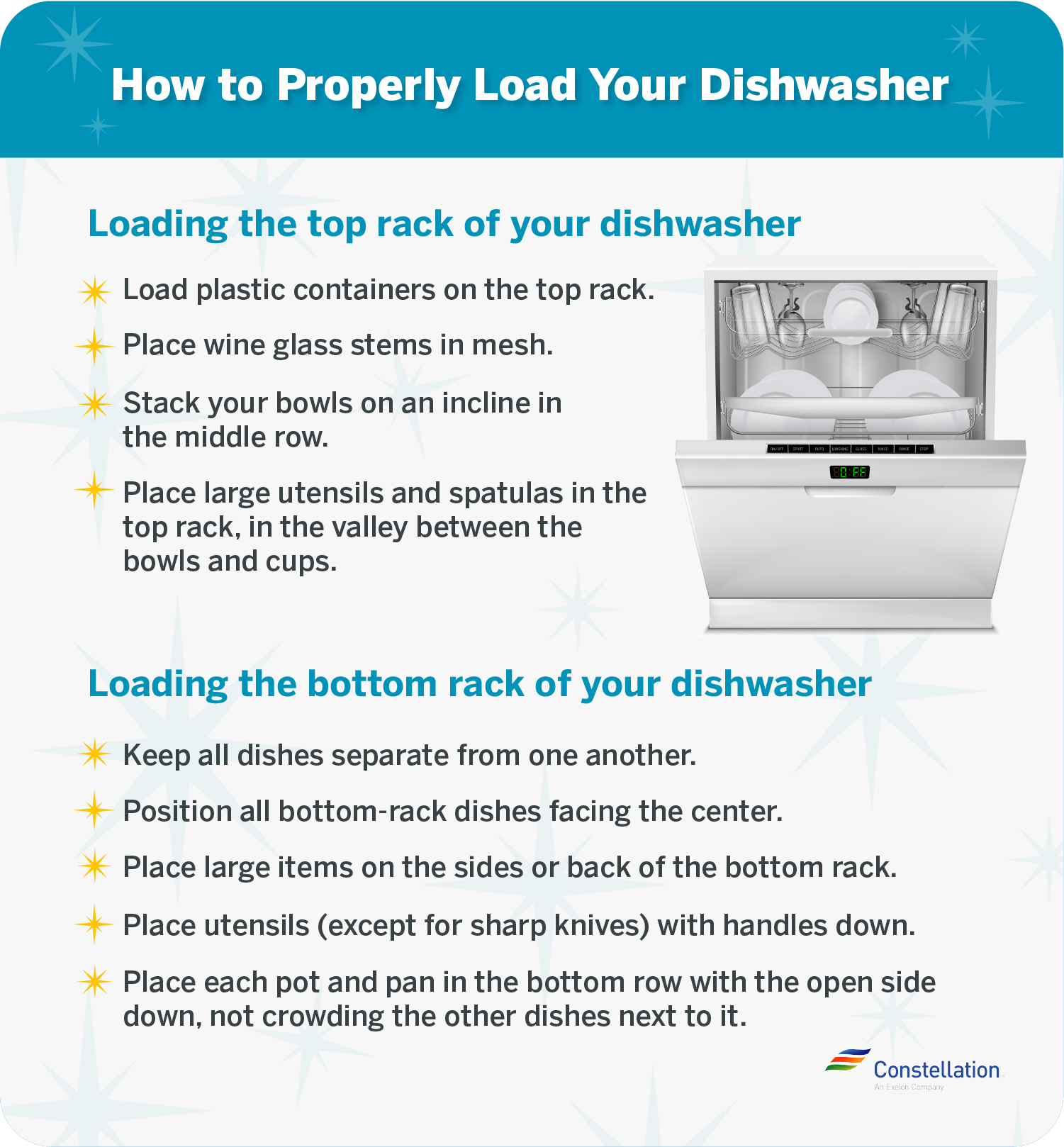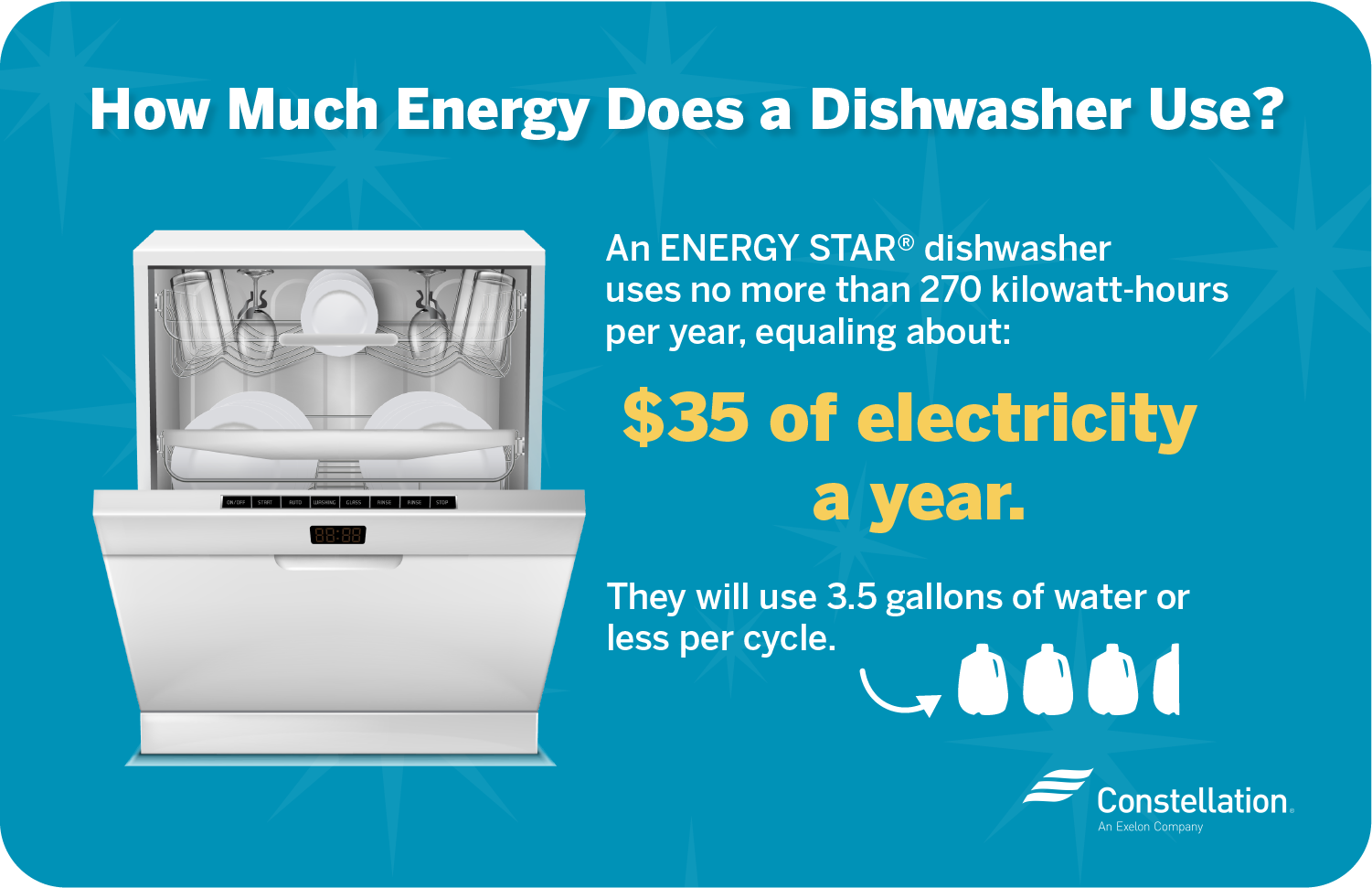
- Category:
Energy Efficiency - Published:
June 2, 2020
How to Properly Load Your Dishwasher for Energy Efficiency
To get your dishes clean, protect them from damage and save energy, it’s important to learn how to properly load your dishwasher. After all, these appliances are engineered to be used in a specific way. But it’s not complicated, and with just a little education, anyone can improve their day-to-day energy efficiency and get cleaner glasses, dishes and flatware. Here are the basics on loading your dishwasher — along with energy saving tips.
The importance of loading your dishwasher correctly
Loading a dishwasher improperly may prevent your dishes from getting clean and can damage delicate items and possibly even your dishwasher. To avoid those problems, it’s important to know the difference between what goes in the top rack and what should be cleaned in the bottom rack. Here are the keys to how to properly load your dishwasher for improved energy savings, reduced water consumption and cleaner dishes.
How to load the bottom rack of your dishwasher
- Keep all dishes separate from one another. Maintaining spatial distancing between items in your dishwasher helps water and detergent get in, around and between them for better cleaning. It also keeps items from banging together, which may cause chipping.
- Position all bottom-rack dishes facing the center. Most dishwasher designs have a central spinning water sprayer on the bottom of the dishwasher tub. Ensure the dirtiest side of each dish faces in toward that water source to make sure it gets the full force of the spray for better cleaning.
- Place large items on the sides or back of the bottom rack. Put larger items on the sides or the back of the unit to be efficient with your space. Make sure nothing extends down that could potentially block the spinning arms of the water sprayer.
- Place utensils (except for sharp knives) with handles down. Utensils will get cleaner if you load them with their handles down. Make sure you have plenty of distance between each one and that your spoons don’t nest against one another. Sharp knives should go in with handles up so you don’t cut yourself. Better yet, wash them by hand to preserve their temper (hardness) and edges.
- Place each pot and pan in the bottom row with the open side down, not crowding the other dishes next to it. If pots and pans don’t go in the bottom upside down, they’ll fill with dirty water.
Pro tip: Clean your dishwasher annually. Your dishwasher can get dirty after cleaning your dishes for weeks and months. An appliance maintenance tip for keeping it working trouble-free, safely and efficiently is to give it a regular cleaning. Remove large pieces of food from the bottom, clean out the filter and wipe down the seals around the door. Check the spray arm for clogged nozzles and use a toothpick to clean them. Running a cycle with a quarter-cup of vinegar can remove scaling, or you could try specially made dishwasher cleaning packets.

How to load the top rack of your dishwasher
- Load plastic containers on the top rack. The dishwasher heating element on the bottom of your unit can melt or warp plastics. Keep them in the top rack to prevent damage. Check to make sure anything you load into it has a label saying it’s dishwasher-safe.
- Place wine glass stems in mesh (if available). Wine glasses are often delicate and can easily break. Some dishwashers have a safety mesh to keep them standing and separated. If you don’t have one, it’s best to wash them by hand.
- Stack your bowls on an incline in the middle row. Slot in bowls at an angle so they get sprayed by the water but don’t fill up.
- Place large utensils and spatulas in the top rack, in the valley between the bowls and cups. Use the center of the top rack for long utensils so they don’t slip down and block the spinning washer arm.
Pro tip: Use only one glass throughout the day. If you’re wondering how to cut dishwasher power consumption, try limiting how often you run your machine. Drink from the same cup or glass all day. After your morning tea or coffee, a quick rinse makes it ready for water or soft drinks. If everyone in your family rinses and reuses, you won’t fill up your dishwasher so fast and have to run it as often.
How to run your dishwasher for energy efficiency
Here are some dishwasher energy saving tips that cut dishwasher power consumption and improve efficiency.
- Avoid peak hours or balance use with other appliances. Demand for electricity is higher during the day, making it more expensive. Run your large appliances overnight to avoid energy use at peak times. If you have a smart dishwasher, you can set up an energy-efficient schedule.
- Don’t pre-rinse your dishes. How much water does a dishwasher use? It partly depends on how you use it. Pre-washing dishes is wasteful and unnecessary with modern high-efficiency machines. Plus, if the detergent doesn’t have food to cling to, it can leave a residue.
- Hand-wash all wooden, cast-iron, bronze, copper or pewter items. Iron will rust. Other metals will pit and discolor. Wooden items can dry out and split. It’s better to wash these items by hand.
- Make sure there are no leftover particles stuck near the drain from previous washes. When you empty your dishwasher, check the bottom for dishes that may have slipped down or food that might be stuck there.
- Check to make sure there is nothing obstructing spray arms at the bottom. Spoons and small dishes can fall and obstruct the spray arms, damaging them or burning out your dishwasher’s motor.
- Use a pre-rinse fluid. If you have hard water, a pre-rinse fluid can prevent spots on your dishes and save you the effort of having to wipe them off.
- Use the right cycle. Be mindful when selecting a cycle. A pot scrubber cycle can damage delicate dishes. An extra soak and rinse can waste energy with a lightly soiled load.
- Only run full loads. It might be a habit to run the dishwasher after dinner every night, but it could be a waste. Instead, run the dishwasher only when it’s full. Any given cycle takes the same amount of water and energy no matter how many dishes you add, so it increases efficiency to make sure the dishwasher is full.
- Be careful not to overload your dishwasher. Don’t go too far in the other direction, though, and overload your dishwasher. You could damage your dishes, and the machine may not clean them properly. That could lead to extra washing after the cycle, which takes more energy and water.
- Consider air-drying rather than running the heat cycle on your dishwasher. Dishwasher power consumption goes way up if you use heated drying. When you’re not in a hurry, let the dishes air-dry. If you run your load at night, your dishes will likely be dry by morning.
Pro tip: Choose an energy-efficient dishwasher. If you’re interested in how to save energy with your dishwasher, the best thing you can do is buy an energy-efficient model with a good ENERGY STAR® rating.
Understanding your dishwasher’s energy use
You can calculate how much electricity a dishwasher uses and how much water, too, and then calculate your energy savings.

How much electricity does a dishwasher use?
According to the ENERGY STAR® website, a standard ENERGY STAR® dishwasher must use 270 kilowatt-hours per year or less, with today’s efficient dishwashers using about $35 of electricity a year. Our guide for how to choose a dishwasher will help you determine which ones are best for you.
How much water does a dishwasher use?
A new standard ENERGY STAR® dishwasher uses at most 3.5 gallons of water per cycle — and will use 3,870 fewer gallons of water over its lifetime. You can conserve water and also save the energy needed to heat and pump it.
How to properly load a dishwasher is one of those everyday things you might not think too much about. But changing daily energy consumption habits can have a profound effect over time. A little extra effort and know-how will get your dishes cleaner, protect them from damage and help to conserve natural resources.




